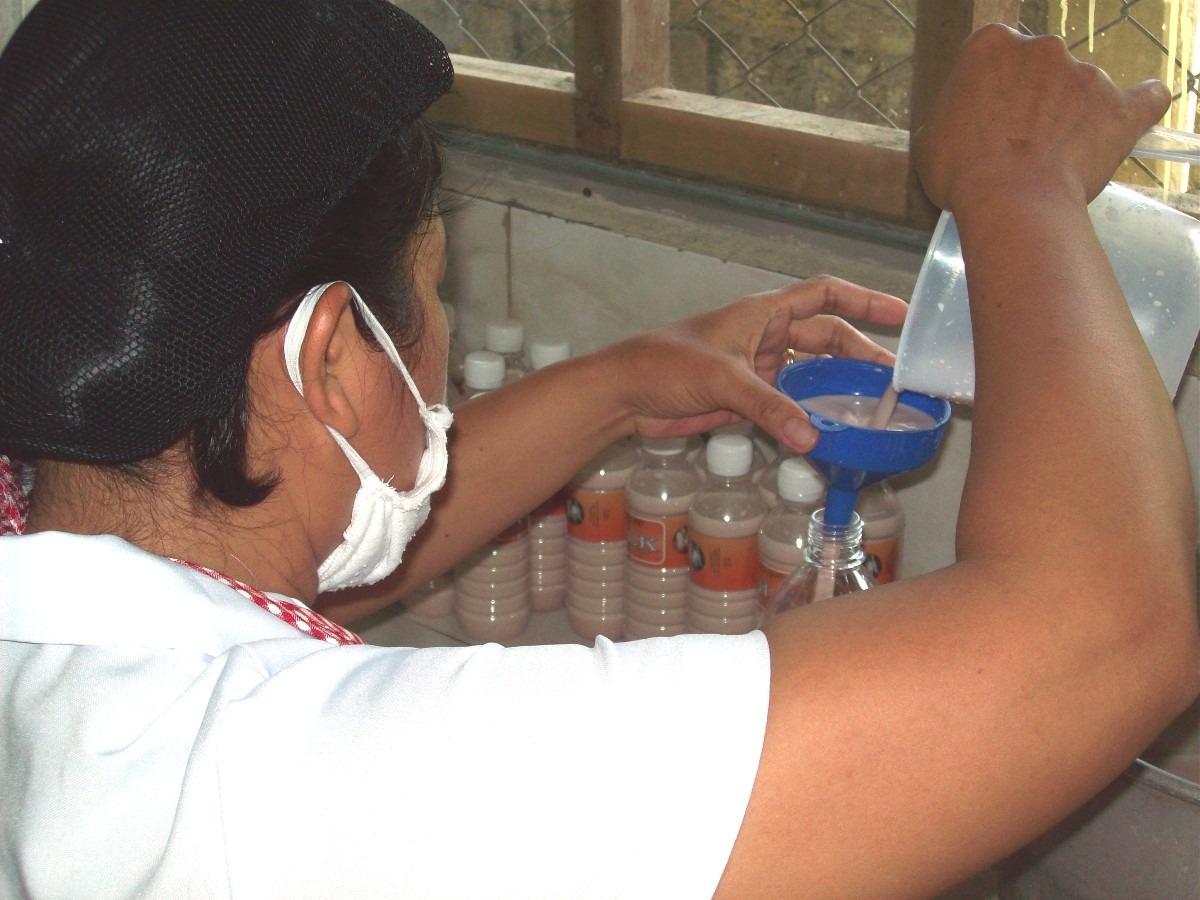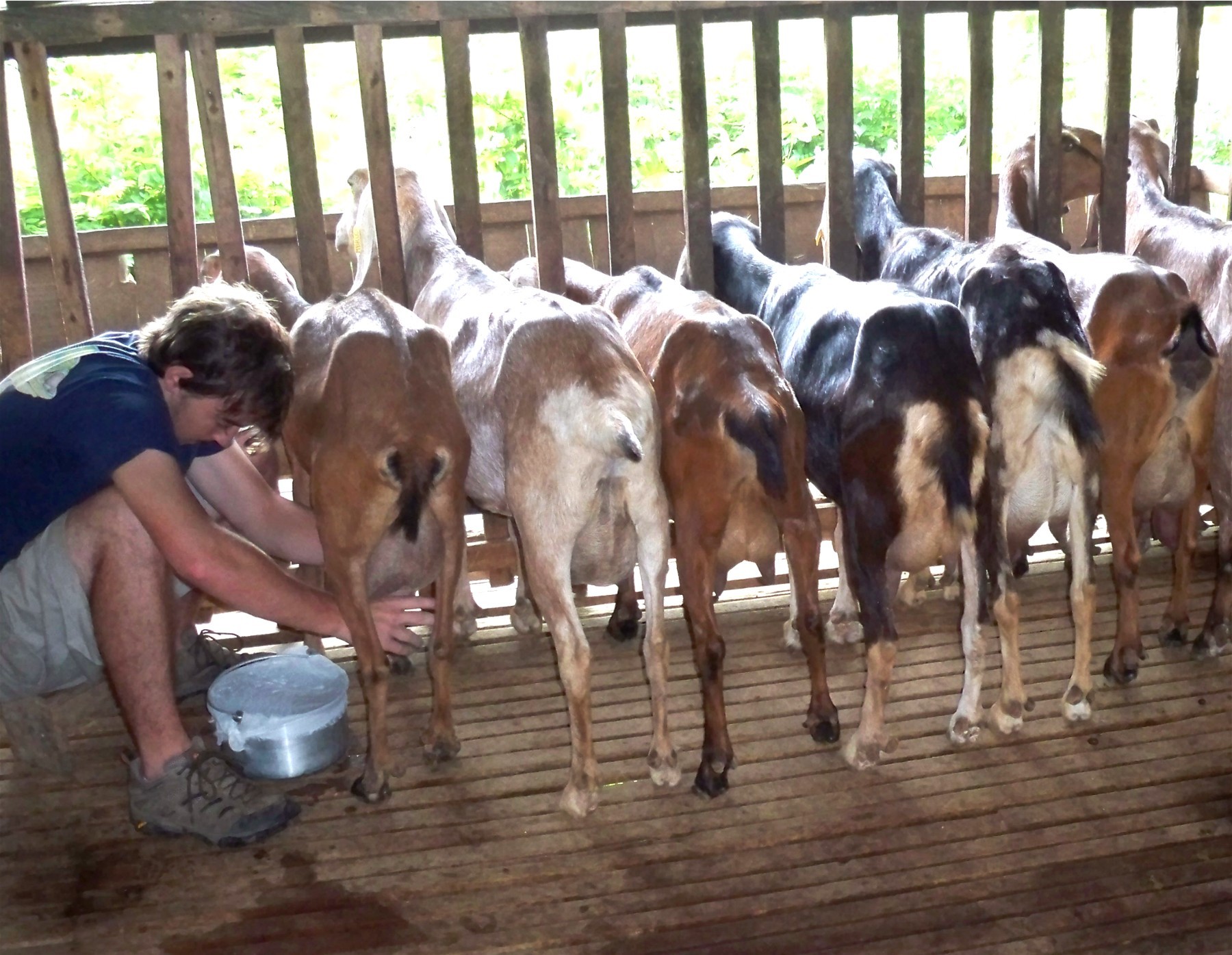Text and Photos by Henrylito D. Tacio
(First of Three Parts)
“Soil is absolutely critical for delivering the ecosystem services on which we all rely,” Prince Charles told Farmers Weekly. “So, it’s high time that such an extraordinary, miraculous living organic system, so disastrously degraded by industrialized agriculture, receives the proper attention it deserves.”
That’s the reason why the Mindanao Baptist Rural Life Center (MBRLC), located in Kinuskusan, Bansalan, Davao del Sur, has been doing so since the late 1979s. It has developed a sustainable upland farming system called Sloping Agricultural Land Technology (SALT).
“Soil erosion is an enemy to any nation – far worse than any outside enemy coming into a country and conquering it because it is an enemy you cannot see vividly,” said then MBRLC director Harold Ray Watson when he received the 1985 Ramon Magsaysay Award for international understanding. “Soil erosion is a creeping enemy that soon possesses the land. We must consider ourselves in a state of emergency.”
MBRLC is a non-government organization that has existed since 1971. Through the years, it has developed several sustainable farming systems. SALT is just one of them; in fact, it has come up with two variants of SALT.
In Simple Agro-Livestock Technology (SALT 2), MBRLC introduced goat raising into the system. Even before the center is noted for its upland farming schemes, MBRLC is already known for its goats. In fact, it is considered the “goat center of Davao del Sur.”
On why MBRLC developed farming systems for the uplands, it is because 30% of the country’s total population are living in these areas. People who farm in these uplands are “the least educated, least paid, least healthy, least hopeful, and most neglected (in terms of) agricultural development of all people in the Philippines,” according to Jethro P. Adang, the current MBRLC director.
Most upland farm families are experiencing malnutrition as they have no sources of protein and other vitamins. As a result, malnutrition remains a public health problem in the country, particularly among infants and young children.
Experts believe the world is losing one generation after another to malnutrition. Something must be done to stop this from happening. That’s why MBRLC bats for the raising of goats to combat malnutrition, which is prevalent in the uplands.
“If farmers can raise their own source of fresh milk, they don’t need refrigerators anymore,” he says. Refrigerators are needed in order for the milk not to be spoiled.
Goat’s milk is the closest to mother’s milk. “Thus, it has a wide variety of health benefits,” wrote Dr. Edwin C. Villar in an article, “The ‘udder side’ of goat.” “Goat milk has smaller, well-emulsified fat globules, without agglutinin protein, hence easier to digest. This is very ideal for infants and senior citizens which constitute approximately 16% of the population of the country.”
That’s not all. “Goat milk has higher levels of amino acids and a significant proportion of medium chain triglycerides, recognized as highly beneficial to a number of health issues, and has higher amounts of vitamins and minerals with greater bioavailability,” Dr. Villar wrote.


Research done by the Department of Science and Technology (DOST) showed that goat’s milk per 200-milligram serving can provide 20% of the daily requirements for calcium, 4% for vitamin A, and 8% for iron. Interestingly enough, goat milk is easier to digest and assimilate in the human body with every 3.8 times more calcium than a mother’s milk.
Under the SALT 2 scheme, 40% of the farm’s land is devoted to agricultural crops (like citrus, black pepper, beans, and corn), 40% to livestock (particularly goats), and 20% to forestry (mostly fruit trees and various nitrogen fixing trees and shrubs).
“Our model farm is only one-half hectare,” says Adang. Instead of raising cattle, which requires a land area of one hectare per animal, MBRLC recommends goats. “Although a goat is small, she can produce as much as four liters of milk every day if she is purebred and is given a ration to meet all of her nutritional requirements,” he says.
In SALT 2, 12 does, and one buck are raised together. The buck, however, is separated from the does so that when it is time to milk the does, the milk won’t “catch” the “goaty smell” of the buck. During breeding, a doe is brought to the cottage of the buck.
As it follows the original SALT system, hedgerows of various nitrogen-fixing trees are planted all over the farm. At the lower portion, more forage crops are planted. The forages and hedgerows are cut every now and then, and the cuttings are used as feed for goats.
The goat manure is utilized as fertilizer for the forages and agricultural crops (which are planted at the upper portion of the farm). Studies have shown that goat manure contains 1.5% of nitrogen, 1.2% of potassium, and 0.5% of phosphorus.
Studies show the annual per capita consumption of dairy products in the country is just 16 kilograms, or roughly half of the recommended daily allowance.
“At present, dairy production in the Philippines is heavily dependent on imports,” said the National Dairy Authority (NDA). “There is a need for the industry to accelerate and increase local production to lessen our dependence on imports.”
Indeed, there is a bright future for Filipino farmers who will be engaged in milk production.
“With an average per capita consumption of 20 kilograms of dairy products and milk every year, a country with an estimated population of 110 million would be a virtual gold mine for dairy and milk producers,” said Emmanuel F. Piñol when he was the head of the Department of Agriculture.
“If only more and more farmers will raise goats in their farms, the health status of our children will improve,” Adang points out. “Not only that, our importation of milk and other dairy products will further decrease.”
Goats may be known as ‘poor man’s cow,’ “but they can be farmers’ source of income should there be crop failure,” assures Adang.
Goats have been raised since time immemorial. David Mackenzie, in his book Goat Husbandry, wrote: “When man began his farming operations in the dawn of history, the goat was the kingpin of the personal life, making possible the conquest of desert and mountain and the occupation of the fertile land that lay beyond. The first of man’s domestic animals to colonize the wilderness, the goat is the last to abandon the deserts that man leaves behind him.”
According to Adang, the successful raising of dairy goats starts with the right breed. Highly recommended are the Anglo-Nubian goats. Its average weight is about 65 kilograms. Some are born with horns, while others are hornless. It has long drooping ears, a distinct Roman nose, and a prominent forehead. Some strains are predominantly black, others brown, and the coat is long.
“Nubian goats produce an average of two liters of milk daily,” Adang says. The butterfat content is about 5.6 percent. This breed is found to have a satisfactory performance in the country.
If farmers cannot secure purebred stock, they can start with the best female goats available in the area. The stock should be mated with purebred or upgraded stock. From the offspring, the best kids are selected while the undesirable ones can either be sold or butcher for meat.
“I think the contribution of goats in the country’s milk production will greatly improve if farmers will include raising goats into their system of farming now,” Adang says.

